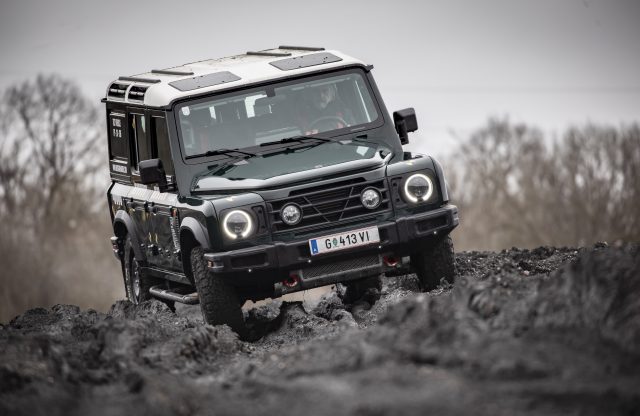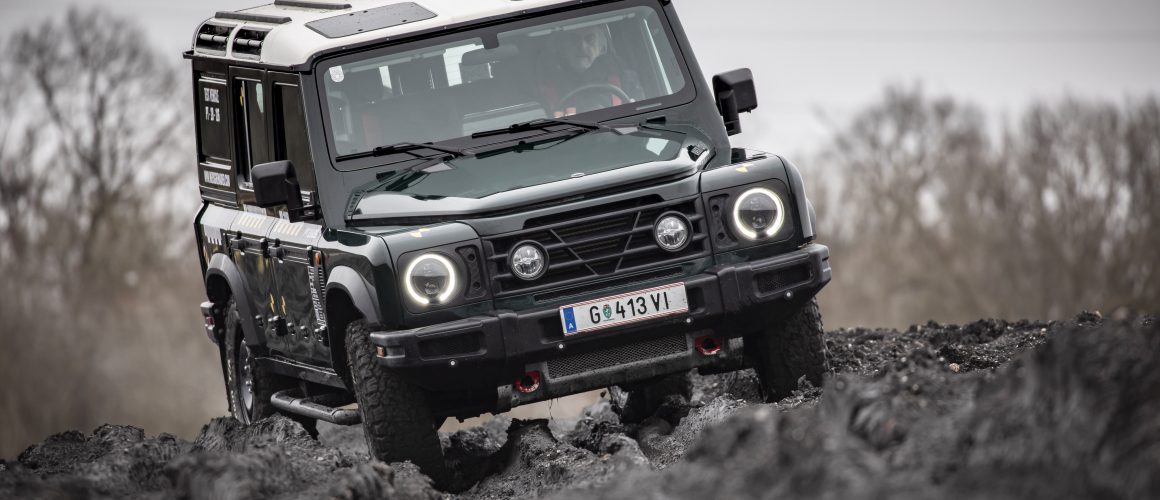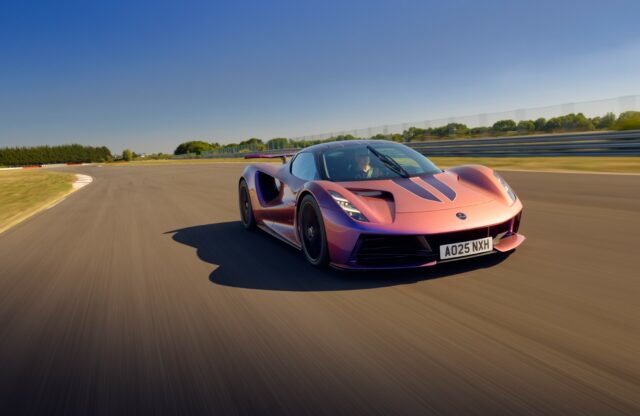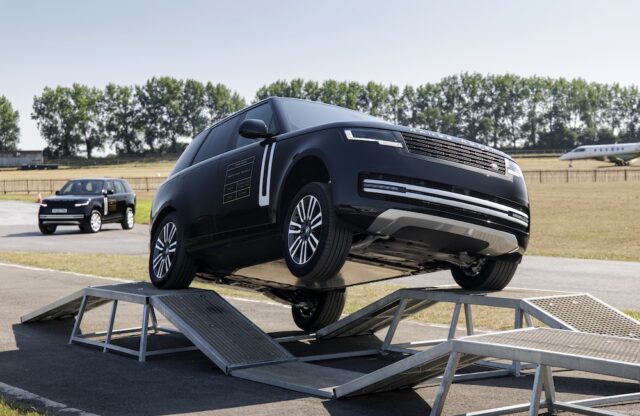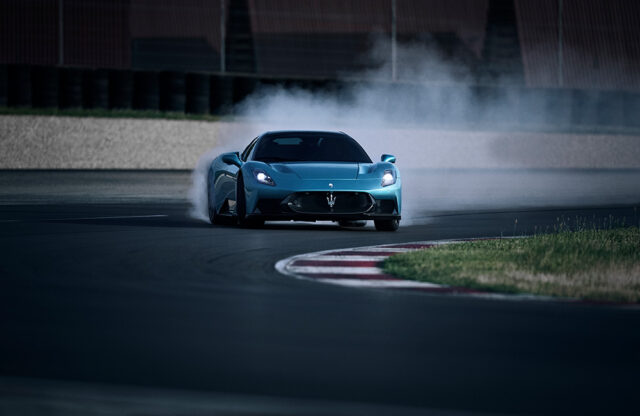WORDS: ELLIOTT HUGHES | PHOTOGRAPHY: INEOS
One of Britain’s most romantic truisms is that many of the greatest ideas are hatched down at the local pub. Sir Edmund Hillary’s historic climb of Everest, for example, was plotted in a public house at the foot of Snowdonia. In a similar vein, Andy Green and Richard Noble’s idea for the Bloodhound SSC Land Seed Record project was also devised over a refreshing pint.
Back in 2018, INEOS CEO Sir Jim Ratcliffe’s name was added to that list of pub-dwelling pioneers, after the idea and name behind his company’s new Grenadier off-roader was conceived in a London hostelry. Still, as entertaining as that story may be, it offers little solace when you’re stuck in the wilderness.
Luckily, being marooned in the middle of nowhere with nothing but your 4×4 and a few basic tools for company is precisely the sort of scenario that INEOS engineered the Grenadier to thrive in. ‘Built on Purpose’ has been the company mantra from the start, but what does that actually mean from a design perspective?
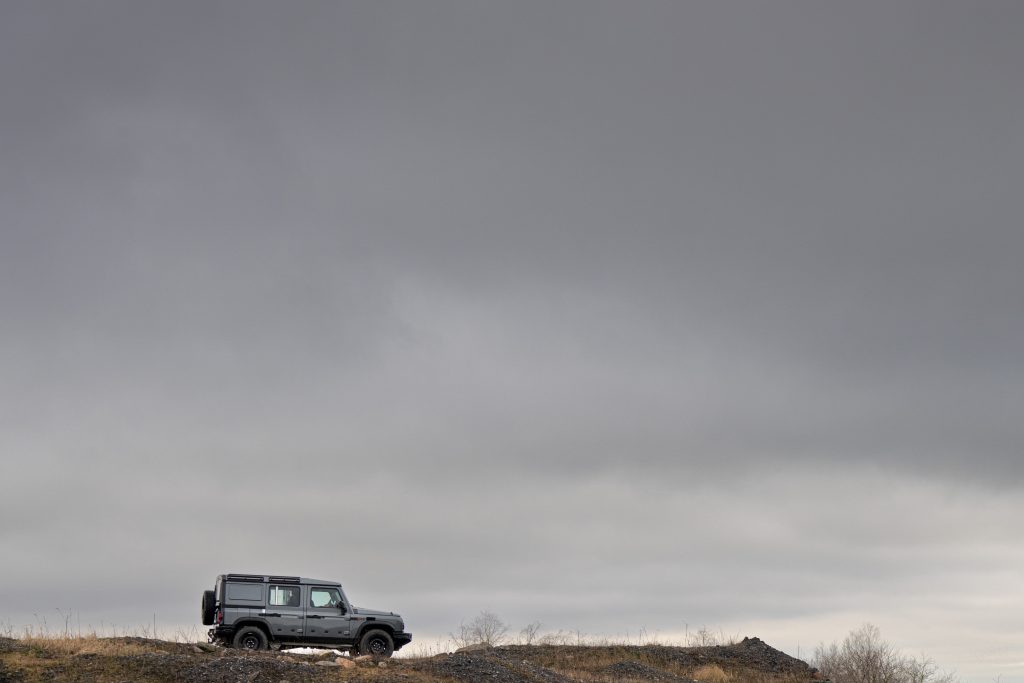
Mainly, a faithful adherence to the old-school off-road recipe that many accused Land Rover of abandoning when it released its new Defender. So, unlike that model, the Grenadier is built upon a tough box-section ladder chassis with girder-like beam axles. Meanwhile, most electronic off-road trickery is replaced with three old-fashioned locking differentials and a trusty transfer box.
While some would accuse INEOS of luddism, the company’s approach does make a lot of sense. Take air suspension; it does indeed offer plushness and adjustability, but what good is all that complicated engineering if it fails and you’re hundreds of miles from a small town, let alone a dealership? Then there’s onboard computers, which certainly have their merits, but they’re also an anxiety-inducing nightmare should they malfunction when you’re technologically illiterate, stranded, or both.
In Land Rover’s defence, the resistance to change is not a new or surprising phenomenon, especially among the automotive community. So, it’s time to put all the unavoidable comparisons with the Defender momentarily to rest and see whether the Grenadier delivers in its own right.
This brings us neatly to a disused coal mine in Hambach, eastern France, where Magneto is preparing to drive a prototype 2B Grenadier after taking a morning tour of the company’s cutting-edge 85-hectare factory.
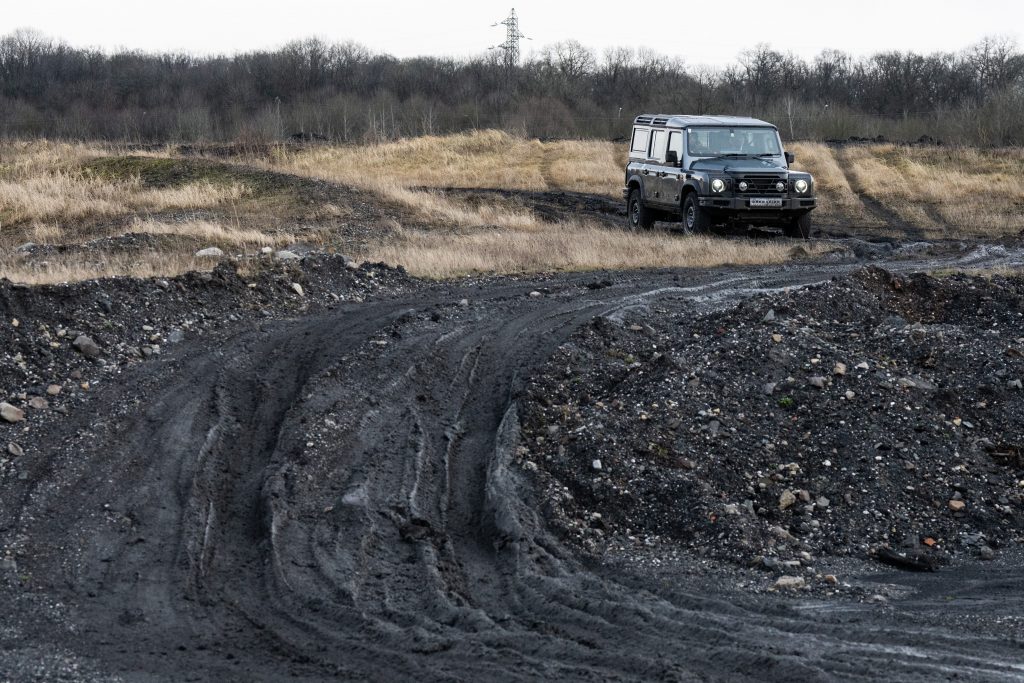
At the height of summer, the uneven, blackened soil and steep inclines of the former coal mine would have provided a stern test of the 2B’s capabilities. But this is mid-February. The wind is frigid, the rain is relentless, and the sodden ground resembles the France described by Wilfred Owen and Siegfried Sassoon.
Unfortunately, Wellington boots wouldn’t fit in our hand luggage, so comically hopscotching over the worst of the sludge to reach the driver’s door is the next best solution. We give the Grenadier’s reassuringly sturdy door handle a pull and climb inside. A slurry of black mud from the shoes of previous journalists cakes the pedals and footwell, but this is not a problem – it can be hosed clean when the day is done.
Other than the muddiness, the first thing of note in the interior is the Recaro-sourced seats; they’re supportive enough to hold us in place over uneven terrain, but are also very comfortable. They’re manually adjustable, in keeping with INEOS’s promise of omitting any unnecessary electronics. It’s an interior that strikes a great balance of individuality and functionality, from its port and starboard motifs and roof-mounted control panel, to splash-proof surfaces and chunky, modular switchgear.
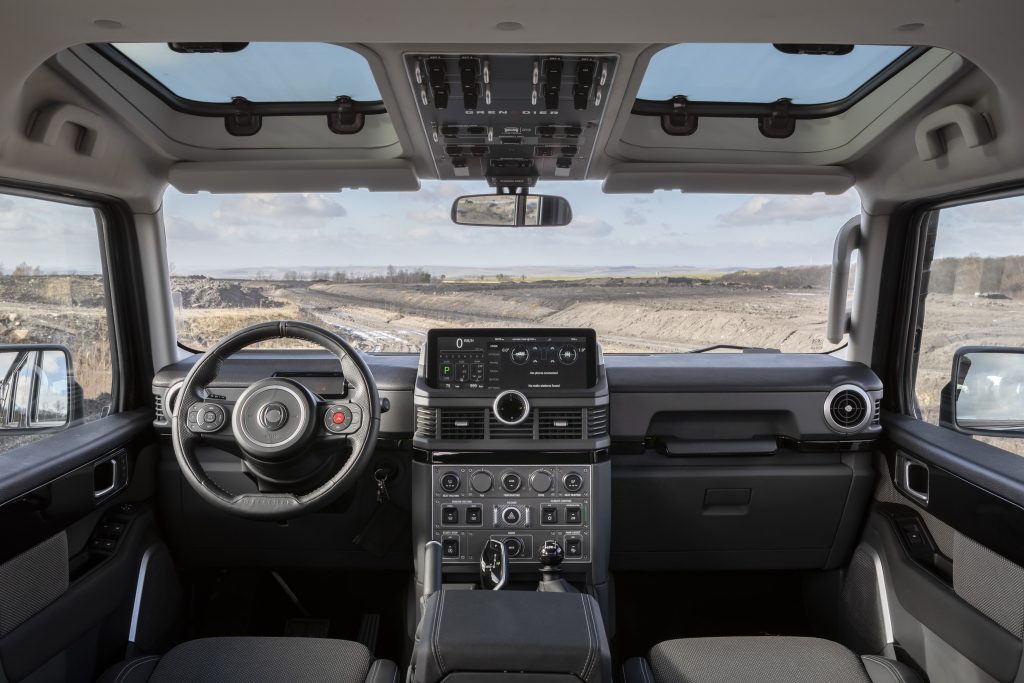
Once we’re comfortable, it’s time to take on the daunting task of descending into the mud bowl. Unsurprisingly, the low-range transmission is already enabled. We select Drive, wrap our fingers around the saddle-leather-bound steering wheel, and tentatively squeeze the accelerator. The car dutifully moves forward, utterly unchallenged by the slippery sludge beneath its knobbly tyres.
Tyres flick muck in our wake as our confidence in the car builds and we continue our greasy descent. Our eyes scan the ground ahead; there’s rocks, ditches and puddles aplenty. The first real obstacle is a deep, narrow ditch, surrounded by compacted mud and water on each side like a moat.
The only way forward is straight over it. The car pitches to and fro as each wheel descends into the ditch and unflinchingly claws itself free. As this is happening, we can feel the industrial strength of the car’s Carraro-sourced beam axles and ladder chassis. The only disconnect from the weighty, rigid feel of the car is the electrically assisted steering, which is a touch too light, although very accurate and easy to get used to. The symmetry of the two-spoke steering wheel also makes it quite easy to lose track of where the wheels are.
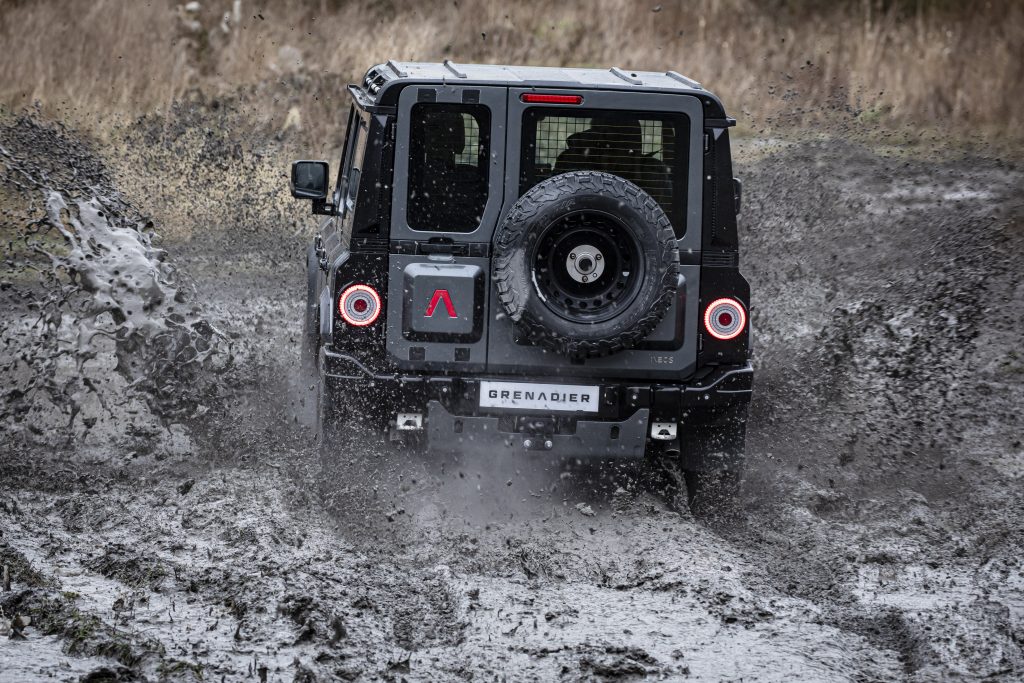
A steep, muddy incline pockmarked with puddles is the next hurdle to test the Grenadier’s off-road armoury. The first step is to lock the differential using the car’s roof-mounted control panel that resembles something from an airliner’s cockpit. With the diffs thus locked, the Grenadier sits resolutely at the bottom, the beams from its LED headlights cutting across the surface of the mound ahead. We drive forwards and the beam pattern ascends over the summit as the front wheels begin to claw the car’s 2600kg mass determinedly upwards.
At this point, losing momentum and getting stuck seem like a real possibility. Naturally, this encourages a more purposeful squeeze of the throttle pedal, while resisting the urge to start manhandling the steering wheel. After a burst of revs from the 285bhp BMW straight-six the Grenadier scampers up the churned, puddle-filled wheel tracks and over the summit without breaking a sweat.
Next comes a descent down the other side of the giant molehill the car has just climbed. We manually select first gear and tentatively ease the slab-nosed front end over the drop. This is where trust in the car and the discipline to keep the front wheels pointing straight ahead are both essential.
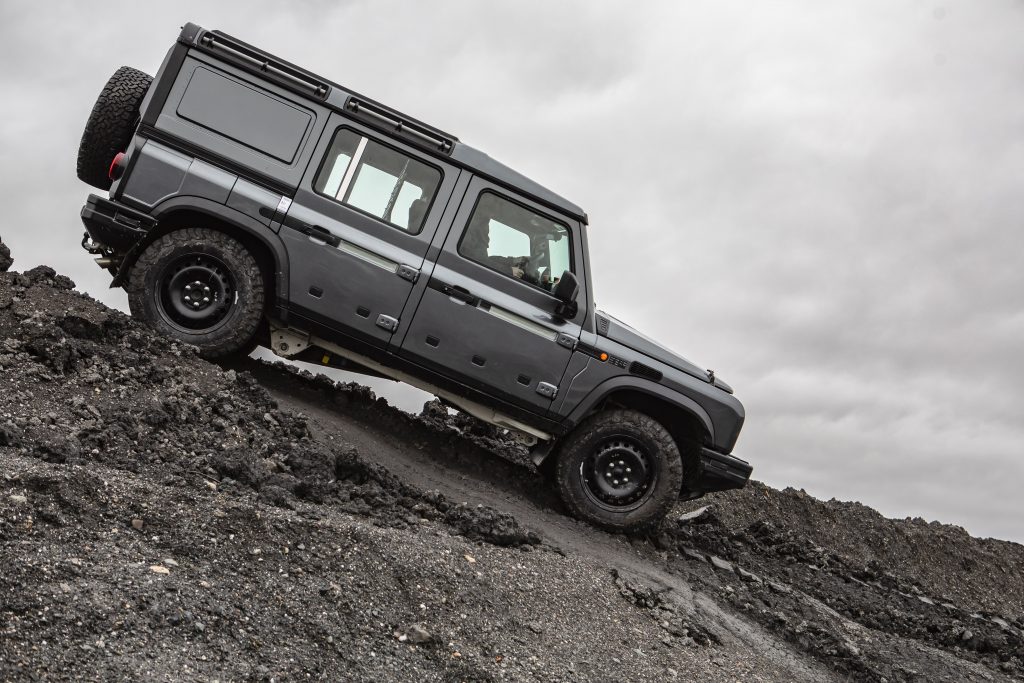
The inclinometer offers little comfort as it indicates a descent angle of over 30 degrees and the windscreen fills with nothing but an intimate view of the ground below. Slow and controlled, the Grenadier begins the perilous decline, and every fibre of our being wants nothing more than to press the brake pedal. But our composure is rewarded and the car’s short overhangs refuse to scrape the ground as it arrives safely at the bottom.
In just ten minutes any reservations about the car’s off-road credentials have evaporated and are replaced with the liberating sensation that we can drive over almost anything nature can throw at us. Soon, we’re revelling in purposely sending the car up, down and through the most demanding terrain we can find…
Which leads to Magneto getting the car stuck – although only momentarily, and it is entirely down to the driver. After mud-plugging through a boggy basin, lead-footedness and over-enthusiastic steering encase the tyres in a muddy embankment. The only thing to do is to let the car roll back down to the bottom and take a more measured approach, which works perfectly. The fact the car encourages such exploits is a testament to its capabilities.
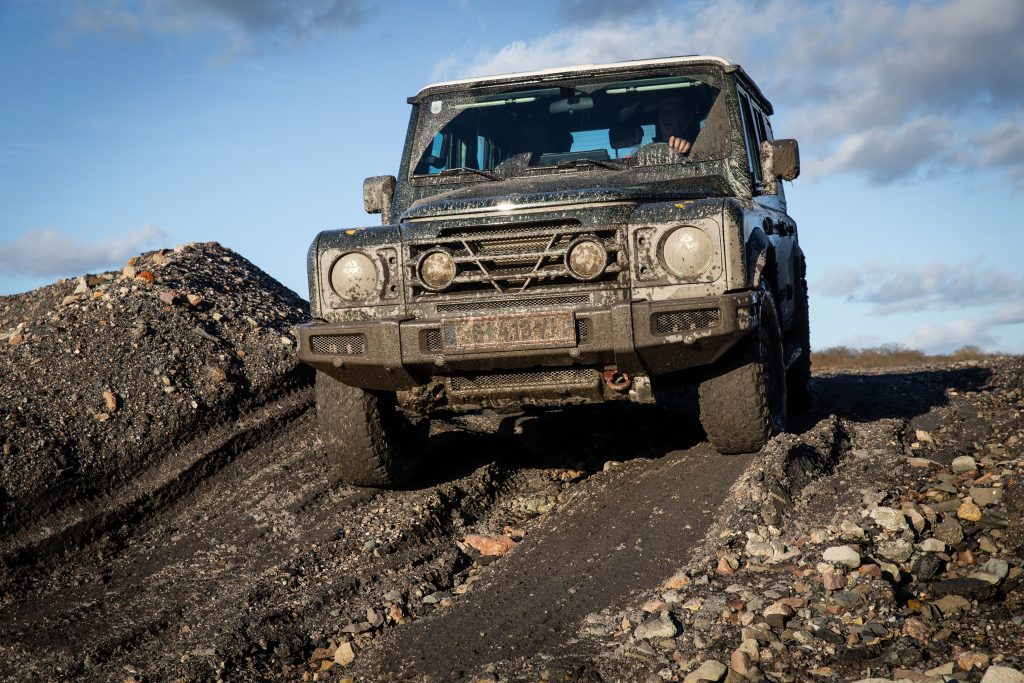
We come away from the Grenadier with the sense that this is a car that has been thought about passionately and holistically through every stage of its development, living up to that ‘Built on Purpose’ tagline. The result is a machine that feels high quality and amalgamates decades of engineering prowess; BMW’s B58 engine is smooth, torquey and powerful, and the gearchanges from the ZF eight-speed automatic are so smooth they’re almost unnoticeable. The KW dampers and Eibach springs work with Carraro’s beam axles and ladder frame to provide both refinement and uncompromised toughness.
So, from an engineering sense, the 2B prototype confirms that the Grenadier will be easily capable of what it set out to do. The only question is whether militaries, green-laners, farmers, adventurers and lifestyle buyers will put their faith in a noble idea born in a pub, or stick to what Maurice Wilks drew in the sand on an Anglesey beach in 1947.

The INEOS Grenadier is expected to launch in July 2022, at £48,000 ($65,000). For more information and reservations, click here.
